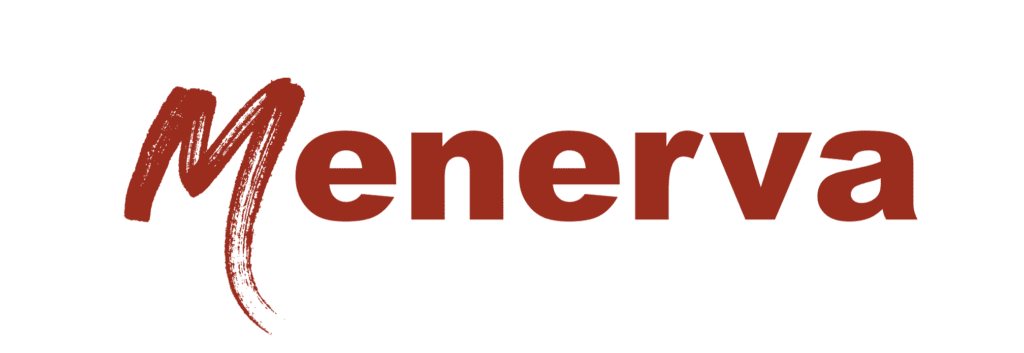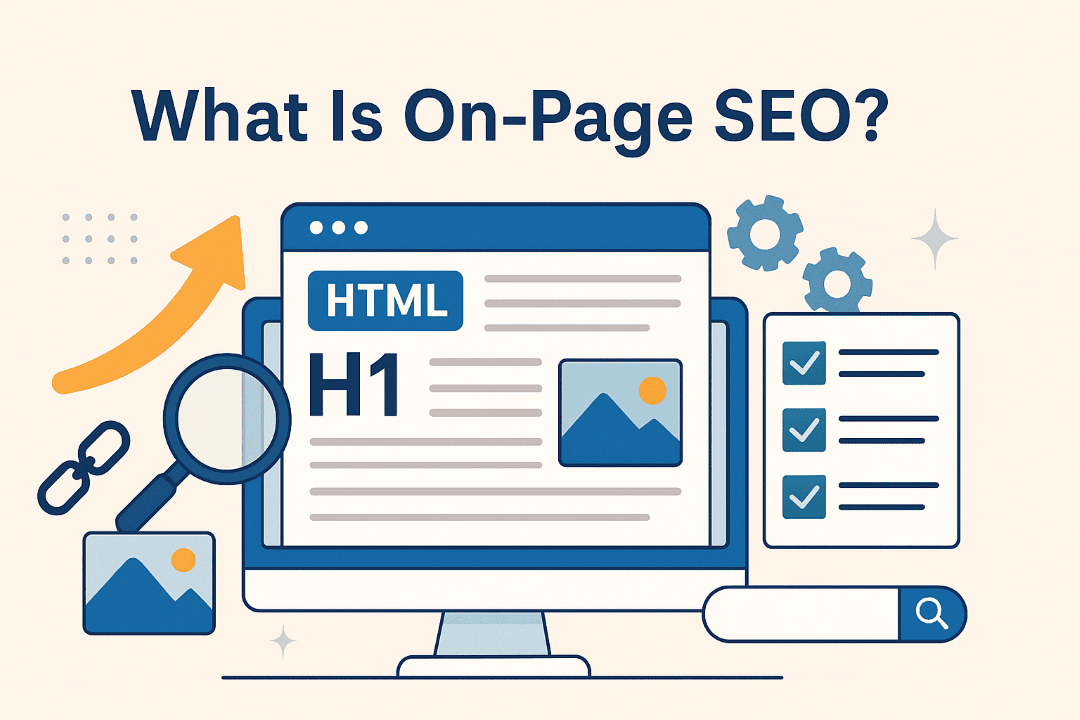On-page SEO is all about shaping the content, structure, and HTML of a single webpage so that search engines can understand it, and real people can get exactly what they came for. It’s the difference between a page that answers a question clearly and one that leaves readers scratching their heads.
When it’s done right, on-page SEO turns every URL into a go-to answer for a specific search query. That kind of clarity helps your content show up in search today, and keeps it visible as Google’s algorithms evolve and AI-powered systems decide what gets surfaced.

Why On-Page SEO Still Matters (Maybe More Than Ever)
Here’s the thing: search engines are getting really good at understanding what people mean, not just what they type. That means content that clearly states what it’s about, quickly answers the main question, and supports it with credible detail has the edge.
It’s not just about rankings anymore. Pages that do this well are more likely to show up in AI-generated answers and get cited in summaries from tools like Google’s Search Generative Experience (SGE).
For users, it’s a smoother ride: they find answers faster, move through your site more easily, and stick around longer. For brands, that means stronger internal linking, more stable rankings, better-quality traffic, and a higher chance of appearing in those smart summaries everyone’s talking about.
Even Google backs this up. Their Search Quality Rater Guidelines emphasize Experience, Expertise, Authoritativeness, and Trustworthiness (E-E-A-T). On-page SEO is one of the most practical ways to demonstrate all four aspects.
What On-Page SEO Actually Includes
Start With Intent, Not Just Keywords
Before you write a single line, figure out the main question your page is here to answer, and say it clearly in the first paragraph. If you’re writing about “on-page SEO,” stick to what it is, why it matters, and how to do it. Don’t wander into off-page tactics or backlink strategies.
Use related phrases where they naturally fit, but don’t overthink it. Yes, tools can help you find semantic keywords, but write for real people first. Search engines are smart enough to follow.
Write Answer-First Sections
When you ask a question like “How do title tags work?” in a subheading, follow it with a short, straight answer. Two to three sentences is ideal. Then, get into the details: examples, edge cases, and helpful context.
Answer-first content helps readers get what they need fast. It also gives search engines and AI tools a clean summary to work with.
Use Headings That Reflect Real Questions
Structure matters. Use one H1 to define your main topic. Then organize H2s and H3s in the order people naturally think:
- What is it?
- Why should I care?
- How do I do it?
- What could go wrong?
- What’s next?
Skip vague headers like “More Info.” Make every heading pull its weight.
Keep Your Copy Readable
Think short paragraphs. Mix up sentence length. Use plain, straightforward language.
Avoid fluff. Replace it with specifics: real definitions, examples, quick comparisons. If you’re making a claim, back it up with a reliable source. That means linking to original studies, official documentation, or well-known industry standards, not some random third-party blog.
Keeping your copy readable isn’t just good writing. It’s a trust signal for readers and AI systems.
Link with Purpose
Internal links do more than help SEO; they help people find their way around your site. From beginner-level pages, link to more advanced topics. From niche content, link back to your cornerstone guides.
Use anchor text that actually says what the destination is about, like “internal linking best practices” instead of “click here.”
And don’t let valuable pages become orphans. If a URL matters, make sure it’s connected to the rest of your site.
Keep HTML Clean and Clear
This is where tech meets content:
- Title Tag: Lead with the topic. Stay under 60 characters. For example: “What Is On-Page SEO? A Guide for Marketers”
- Meta Description: Promise value in a sentence or two. Stay under 155 characters. Think of it like search-result ad copy.
- URL: Make it short, clean, and human-readable. Use /on-page-seo/, not /blog/post-12345-seo-tips-and-tricks/.
- Image Alt Text: Be descriptive. “Google Search Console’s Core Web Vitals report” beats “SEO image.”
Experience Signals Matter
Google cares about how people experience your content. So does AI. Here’s what to watch:
- Page speed: Compress your images. Avoid bloated scripts.
- Mobile design: Make sure everything looks and reads well on small screens.
- Core Web Vitals: Layout stability, load time, and responsiveness all count.
- Accessibility: Use clear heading structures, readable text, and high-contrast colors. This helps everyone—including screen readers and AI parsers.
Use Structured Data (If It Makes Sense)
Schema types like Article, FAQPage, or HowTo help search engines understand your page better. But only add markup that reflects the actual content on the page.
Stick to JSON-LD (Google’s preferred format), and always test your markup in Google’s Rich Results tool before you publish. If you misuse schema, you could lose eligibility for enhanced results—or worse, get hit with a manual action.
Learn why schema markup is important for SEO
Show Your Expertise On the Page
If you want to signal E-E-A-T, your page needs to look like it came from a credible human, not just a content machine. Here’s what to include:
- Byline: Name the author or reviewer
- Bio: Include a short line of relevant credentials (e.g., “15 years in technical SEO“)
- Dates: Include both published and last-updated dates. Fresh content matters.
- Citations: Link to reputable sources whenever you’re making a factual claim
These signals help build trust—with your audience and with the systems that surface high-quality content.

Real Examples of On-Page SEO
- Definition Page (e.g., “What Is On-Page SEO?”). Lead with a two-sentence definition. Follow up with why it matters, then walk through core elements like titles, headers, and internal links. Wrap it up with a short FAQ and a clear call to action.
- How-To Page (e.g., “How to Optimize a Title Tag”). Start with a basic rule of thumb. Then offer “good/better/best” examples. Touch on edge cases (like brand mentions or character limits), and link to related tips on meta descriptions or H1s.
- Comparison Page (e.g., “On-Page vs. Off-Page SEO”). Start with the bottom-line difference in a single paragraph. Add a short, readable comparison section. Then dive into when to prioritize each and how they complement one another.
A Practical On-Page SEO Workflow for Teams
- Define the Page’s Purpose. One topic. One main question. One audience. Please write it down at the top of your draft.
- Outline Before You Write. Turn user questions into H2s and H3s. Arrange them in the order your audience would ask.
- Draft Answer-First Sections. Lead with the takeaway. Then support it with examples and proof.
- Tune Your HTML. Write sharp title tags. Use clear meta descriptions. Keep URLs tidy. Don’t forget alt text.
- Link the Page Internally. Connect to related content. Avoid publishing in isolation.
- Launch, Then Measure. Watch impressions, clicks, rankings, time on page, internal CTRs, and conversions. If something’s not working, revise it.
Common On-Page SEO Mistakes (and How to Fix Them)
- Keyword Stuffing: If you’re repeating the exact phrase too often, it hurts readability and SEO. Use synonyms and write like a human.
- Vague Headers: Skip “More Info.” Try “How On-Page SEO Improves Readability.”
- Thin Content: Definitions alone won’t cut it. Add real value, next steps, and context.
- Publishing in a Vacuum: Connect new pages to existing content. Build links in both directions.
- Never Updating: Things change—so should your content. Schedule refreshes for high-traffic pages, and show readers when you’ve made updates.

On-Page SEO in the Age of AI
AI tools and search engines love content that’s clear, useful, and trustworthy. If your page explains its purpose early, answers questions directly, and includes real examples and references, it stands a much better chance of being featured, cited, or clicked.
On-page SEO today isn’t about tricks—it’s about clarity, structure, and intent. The better your content serves the user, the more likely it is that search engines (and AI tools) will do the same.
Need Help With On-Page SEO?
Whether you’re optimizing a few key pages or doing a full site audit, Menerva Digital can help you build a practical plan that works for your team, and actually drives results. Start a conversation with us today!
Frequently Asked Questions About On-Page SEO
What’s the difference between on-page SEO and off-page SEO?
On-page SEO is everything you can control on a single page: your content, structure, HTML, and internal links. Off-page SEO refers to activities that occur outside the page, such as backlinks, social signals, and brand mentions. Think of on-page SEO as building a strong foundation, and off-page SEO is what helps you promote it.
Do I need to update old pages for on-page SEO?
Yes, regularly. Content that’s out of date can lose rankings, especially if competitors are keeping theirs fresh. Revisit pages every 6–12 months to check facts, update screenshots, refresh examples, and reoptimize for user intent. Add an “Updated” date for transparency and trust.
How important are title tags and meta descriptions, really?
Very. Title tags are still one of the strongest on-page signals for search engines. Meta descriptions don’t directly affect rankings, but they do influence click-through rates. A well-written one can make or break whether someone chooses your result in the SERP.
Can I optimize a page for more than one keyword?
You can, but focus is key. Start with one primary intent or question per page. Then, naturally, include related phrases and synonyms throughout the content. If you’re trying to target multiple distinct topics, consider breaking them into separate pages.
What’s the best word count for on-page SEO?
There’s no magic number. What matters is whether your page fully answers the user’s question. For some topics, 500 words is enough. For others, 1,500+ might be necessary. Quality, clarity, and usefulness always beat filler.
Does internal linking really help with SEO?
Absolutely. Internal links help search engines understand your site structure and guide users to related content. They distribute authority across your site and help prevent important pages from becoming “orphans.” Just make sure your anchor text is descriptive and relevant.
What’s structured data, and do I need it?
Structured data is code (usually JSON-LD) that helps search engines interpret your content, such as by marking up FAQs, articles, or how-to guides. It can unlock rich results in search, like star ratings or drop-down answers. Use it only when it matches what’s visibly on the page.
How does on-page SEO affect AI-generated results (like SGE)?
Clear, well-structured content is easier for AI systems to summarize and cite. If your page starts with a direct answer, follows a logical structure, and includes expert signals (author bios, sources, etc.), it’s more likely to be included in AI overviews like Google’s Search Generative Experience.





